SOURCE:The Ultimate Guide to Nose Job in Iran or Turkey
SOURCE:The Ultimate Guide to Nose Job in Iran or Turkey
Different Types of Nose Shapes
1. Straight Nose:
2. Snub Nose:
3. Roman Nose:
4. Aquiline Nose:
5. Greek Nose:
6. Nubian Nose:
7. Hawk Nose:
8. Celestial Nose:
9. Turned-Up Nose:
10. Button Nose:
11. Fleshy Nose:
12. Bulbous Nose:
13. Crooked Nose:
14. Wide Nose:
15. Thin Nose:
Different Types of Nose Shapes in Different Regions:
1. African and Afro-Caribbean Populations:
2. East Asian Populations:
3. South Asian Populations:
4. Caucasian (European) Populations:
5. Middle Eastern Populations:
6. Native American Populations:
7. Southeast Asian Populations:
8. Pacific Islander Populations:
Which Types of Nose Shapes Do You Have?
How Can I Change My Nose Shape?
source:How many models of nose shapes are there
Bulbous Nose Tip Surgery Recovery Steps
Bulbous nose tip surgery recovery is a relatively straightforward process, causing minimal disruption to the patient’s daily routine. In the days and weeks following the procedure, the patient may experience mild discomfort and swelling, which can be managed with over-the-counter pain medications and cold compresses. Immediately after the surgery, some bruising and swelling around the nose may occur, but these symptoms should diminish within a few days. Temporary numbness around the nose is normal and typically resolves within a few weeks. For at least two weeks post-surgery, the patient should refrain from strenuous activities and contact sports, minimizing any direct touching of the nose during the recovery period. Regular application of ointment is essential to reduce crusting or scabbing. Wearing glasses or sunglasses on the nose should be avoided for at least two weeks. After the initial two-week period, the patient can gradually resume normal activities but should avoid any activities involving direct contact with the nose until approved by their surgeon. While the final results of bulbous tip nose surgery may not be immediately apparent, they should become more visible over the next year. Adhering to post-operative instructions from the surgeon is crucial for ensuring the best outcome and a swift recovery.
Avamedi offers multiple other services such as Rhinoplasty in Iran.
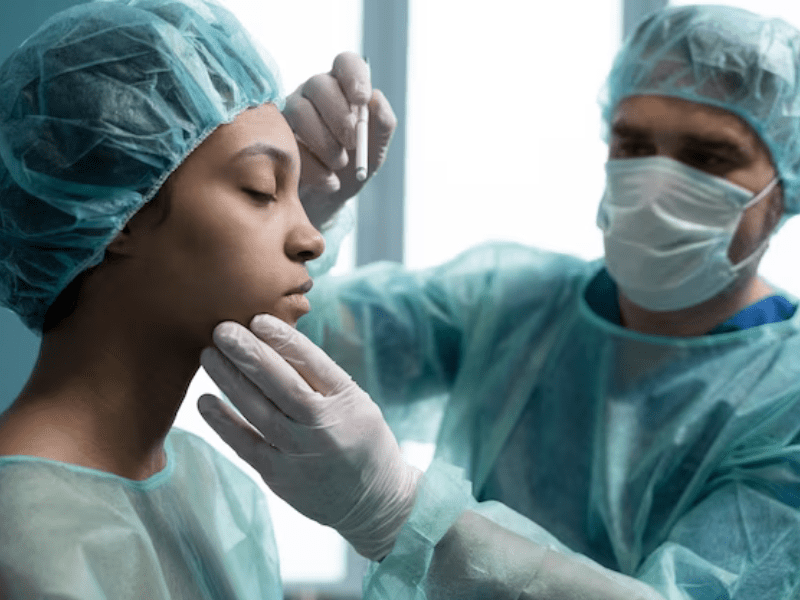
What is a Bulbous Tip?
A bulbous tip is a nose shape characterized by a rounded and protruding tip. This nose shape is prevalent across various ethnicities and results from an accumulation of fatty tissue at the lower part of the nose, creating a more rounded appearance. The bulbous tip is frequently perceived as attractive and is considered a symbol of beauty, especially in Western cultures. However, some individuals may feel that their bulbous tip is excessively large or prominent, leading them to explore cosmetic procedures to reduce its size.
Click (Speed Up Your Nasal Tip Surgery Recovery Time) to read the article.
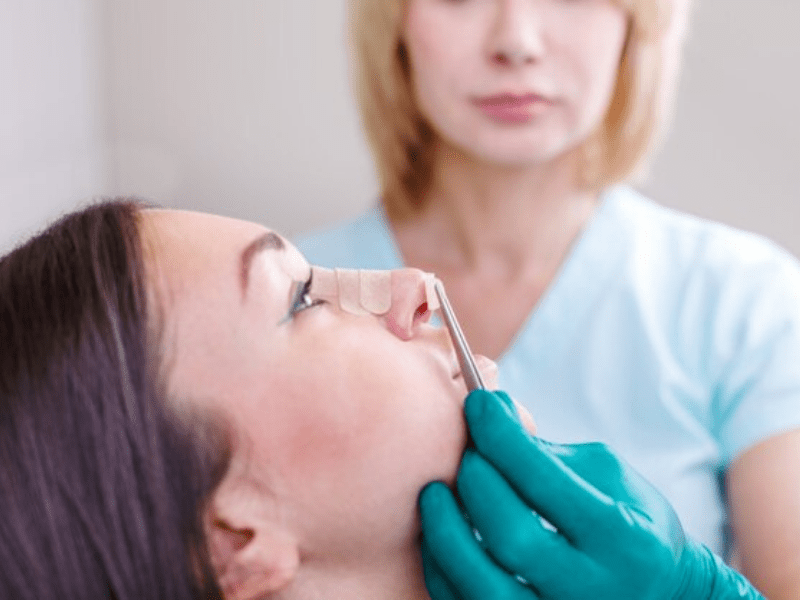
Bulbous Nose Tip surgery Procedure
Bulbous Tip Rhinoplasty is a cosmetic surgery procedure designed to modify the nose’s shape, typically by reducing the size of the tip. The objective is to create a more refined and aesthetically pleasing nose that harmonizes better with the overall facial proportions. This surgery is often chosen to address concerns such as an excessively large or drooping nasal tip, enhance tip definition, or correct a crooked or off-center nose. The procedure is conducted under general anesthesia, commencing with the surgeon making small incisions within the nostrils. Through these incisions, the surgeon gains access to the underlying cartilage and bone, which are then reshaped to achieve the desired nasal tip. Sutures or other techniques may be employed to modify the size and shape of the nasal cartilage and bone, and grafts or other methods may be utilized to refine the nasal tip. After attaining the desired shape and size, the incisions are closed, and the nose is left to undergo the healing process. Bulbous nose tip surgery recovery typically spans about two weeks, during which patients are advised to avoid activities that may exert pressure on the nose, such as strenuous exercise or contact sports. The final results become apparent approximately six months post-surgery, once all post-operative swelling has subsided.
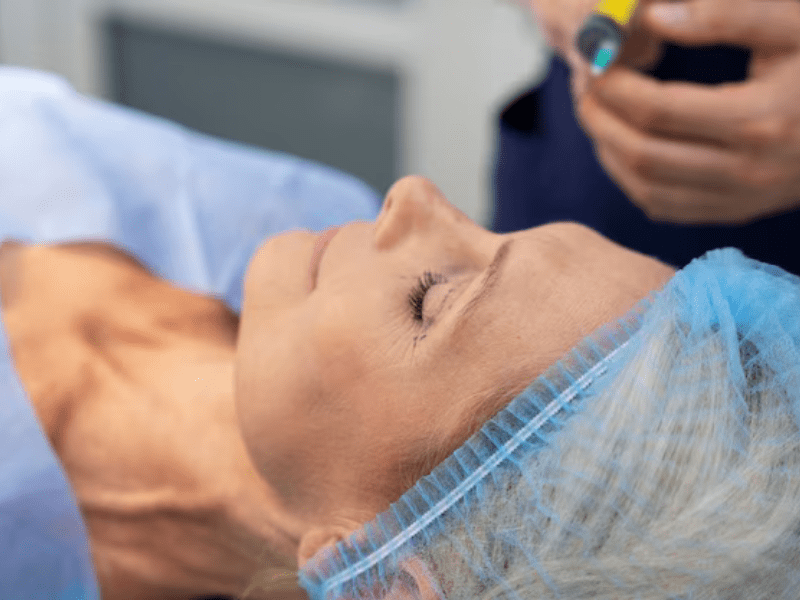
What Are the Treatments for Bulbous Nose Tips?
Rhinoplasty surgery stands as the most effective contemporary treatment for a bulbous nose. Utilizing specialized surgical techniques, it can enhance the bulbous tip and reshape small cartilage edges while preserving the integrity of your nasal structure. Through tailored suturing techniques for bulbous noses, rhinoplasty has the capacity to produce a more defined, natural-looking nasal tip. In cases where patients have thicker skin, additional steps like thinning the nasal tip may be necessary to ensure enduring, high-quality results, addressing both functional and aesthetic aspects.
-
Cartilage Removal and Shaping:
Through the meticulous removal of cartilage from the nasal tip and the careful reshaping or refining of the remaining cartilage, our highly skilled surgeons can effectively reduce both the size and roundness of your bulbous nose tip. This results in a comprehensive enhancement of your nasofacial appearance.
-
Open vs Closed Rhinoplasty for Bulbous Tip Reshaping:
When addressing a bulbous nose tip through rhinoplasty, minor adjustments can be made using the closed rhinoplasty technique. However, for more advanced reshaping, the open rhinoplasty technique may be employed, providing better access and allowing for more extensive cartilage removal and nose tip shaping. In a closed rhinoplasty, all incisions are made inside the nostrils, minimizing the risk of visible scarring. On the other hand, open rhinoplasty involves an incision across the columella (the strip of tissue dividing the nostrils), along with additional incisions inside the nostrils. Although a small incision is made on the visible skin of the nose with the open method, it is typically inconspicuous and tends to heal well.

Bulbous Nose Tip Surgery Recovery; Dos & Don’ts
Bulbous nose tip surgery recovery typically takes around 1.5-2 weeks. The cast and stitches are removed approximately a week after the surgery, and the taping is taken off in the subsequent days. While some residual swelling may persist, it is not prominently noticeable. The gradual reduction of swelling can be observed: by three weeks post-procedure, it diminishes by 20-30%, at six weeks post-procedure, it reaches 50-60%, and after a year, it is completely resolved. Notably, the healing of the tip tends to take the longest.
Here are some dos and don’ts after bulbous nose tip surgery;
-
Don’t Overexert Yourself:
Take a break from demanding activities, especially heavy housework, after your surgery. The timing for resuming your regular daily routine will depend on your healing progress and the level of strenuousness involved in your work. Most individuals can resume normal activities within a three-week period. Typically, patients can resume driving 5-7 days post-operation, participate in non-contact sports after 3-4 weeks, engage in contact sports after 6 weeks, and participate in face-first activities such as diving after 8-12 weeks.
-
Don’t Blow Your Nose or Sneeze:
During the bulbous nose tip surgery recovery time, it is advisable to refrain from blowing your nose or sneezing. Additionally, it is recommended to avoid yawning and laughing, and as challenging as it may be, minimize facial movements, especially those involving the nose. If sneezing becomes unavoidable, aim to expel through your mouth rather than your nose.
-
Keep Your Head Elevated:
After surgery during your bulbous nose tip surgery recovery time, it’s beneficial to maintain an elevated head position as much as possible. This can be achieved by sleeping with 2-3 pillows. The elevation of your head facilitates a more prompt reduction of swelling.
-
Take Pain Medication or Antihistamines as Needed:
Although pain medication is acceptable, especially in the initial stages, prolonged use may lead to constipation. It is recommended to switch to Tylenol as soon as possible.
source:Guide to Bulbous Nose Tip Surgery Recovery
Nasal Tip Surgery Recovery Time; Week by Week
The typical nasal tip surgery recovery time is approximately one year, though individual experiences may vary. Breaking down this timeline into milestones provides a clearer understanding of the process:
-
1 Week:
- At this point, the splint can be removed, allowing you to venture into public without conspicuous signs of surgery, unless there’s residual bruising around the eyes, which might take an additional 2 weeks to fully resolve. It’s safe to resume normal daily activities.
-
2 Weeks:
- Facial swelling has significantly diminished, and most bruising should have disappeared.
-
3-4 Weeks:
- Cardiovascular activities such as jogging, swimming, and cycling can be safely resumed.
-
6 Weeks:
- Bones are stable, enabling the resumption of resistance workouts (weight lifting), as well as the use of glasses and the ability to blow your nose.
-
3-6 Months:
- Numbness and unusual sensations in the nose and nasal skin should largely resolve during this period.
-
1 Year:
- The healing process is considered complete. Swelling should have entirely subsided, and the nose’s new shape is fully refined. Individual results may vary, but generally, this marks the conclusion of the nasal tip surgery recovery time.
Click (Guide to Bulbous Nose Tip Surgery Recovery) to read the article.
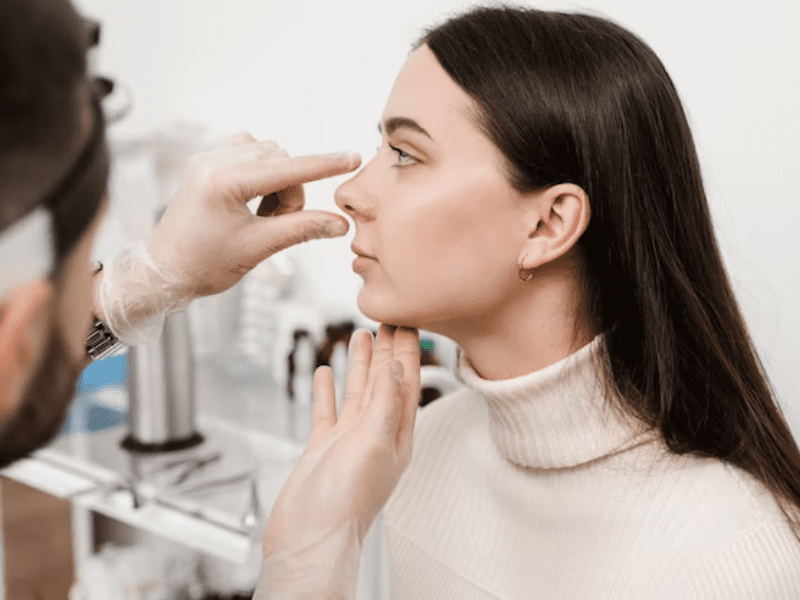
Rhinoplasty Surgery Can Fix These Conditions
Reshaping a bulbous nasal tip (which is talked about in this passage about nasal tip surgery recovery), straightening a crooked nose, smoothing out bridge bumps or scoops, and narrowing nasal bones are all aspects of rhinoplasty. Additionally, this surgical procedure can address issues related to breathing, sinuses, and snoring.
The transformative results of a Bulbous Nose Rhinoplasty can be remarkable, not just physically but also in terms of the impact on your life. The boost in confidence and overall mental well-being is significant.
Click (What are Middle Eastern nose features?) to read the article.
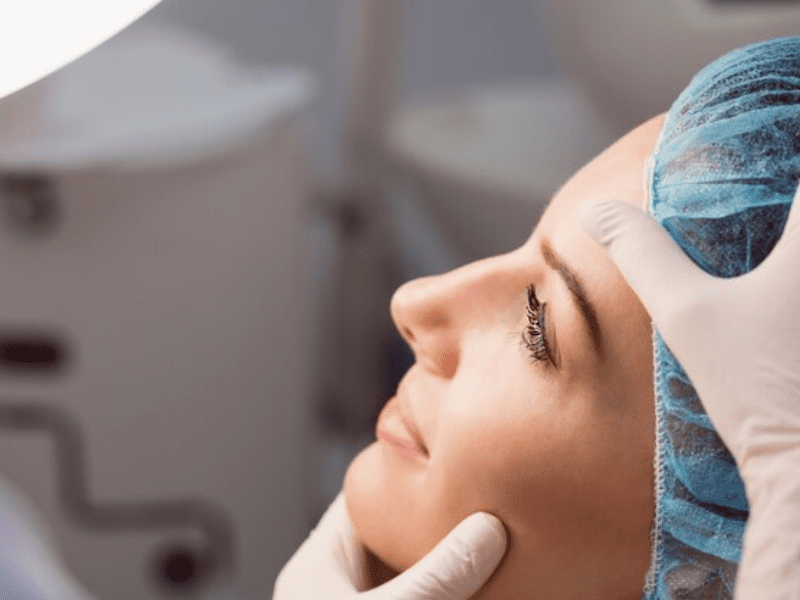
What Happens in Bulbous Nose Rhinoplasty?
Following a thorough consultation, your surgeon will determine whether to proceed with an open or closed procedure. In the closed approach, incisions are made inside the nose, while the open procedure involves an additional incision across the columella, the strip of tissue between the nostrils. The primary distinction lies in the open procedure providing enhanced access to specific areas of the nose.
The surgeon will administer general anesthesia before commencing the procedure. Depending on the requirements, cartilage grafts may be performed, and the skin around the nasal tip may be thinned. Some cartilage might be removed, and suturing will be carried out to refine the shape of your nose.
Typically lasting between 2 to 2½ hours, the surgery will be followed by your awakening in the recovery room. Subsequently, a friend or loved one will be able to accompany you home immediately after the surgery. After the surgery, you have to go through a nasal tip surgery recovery time.
Click (The Ultimate Guide to Nose Job in Iran or Turkey) to read the article.
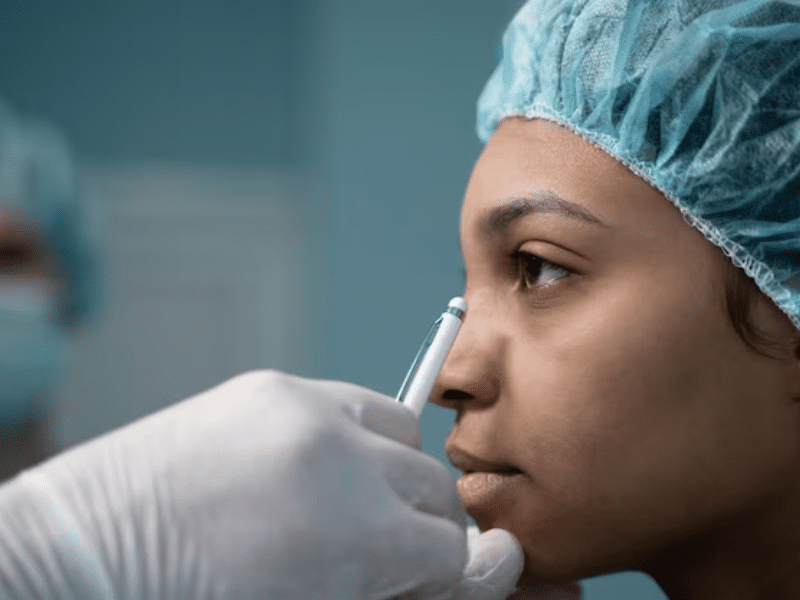
Some Solutions to Ease the Nasal Tip Surgery Recovery Time
In this section, we have briefly talked about the necessary solutions to ease the nasal tip surgery recovery time;
Pay Attention to Your Body:
While your plastic surgeon can assess your nasal tip surgery recovery time externally, only you can truly gauge how you’re feeling. Be attuned to your body, if anything feels off post-surgery, promptly communicate it with your doctor for discussion and guidance.
Maintain Elevation for Your Head:
Avoiding side-sleeping after rhinoplasty is crucial, not only for comfort but also to prevent prolonged recovery due to increased bruising and swelling. Additionally, it helps prevent the displacement of your nose. To achieve this, it’s recommended to keep your head elevated at night for six weeks post-surgery. You can easily achieve this by using two or three pillows or opting for a foam wedge. Another effective method is sleeping in a reclined position.
If you have a habit of shifting positions during sleep, you can stabilize your head using a travel pillow or by creating a barrier with rolled-up towels.
Utilize Cold Compresses:
During the initial 72 hours post-surgery, incorporating cold compresses can effectively minimize swelling. However, exercise caution and avoid direct application to your nose. Instead, place the compress on your cheeks to prevent unintentional shifting of bones or cartilage.
Prioritize Adequate Rest:
Post-surgery congestion may pose challenges for falling asleep, but sufficient rest is crucial for the recovery journey. Your body utilizes energy to facilitate healing, and obtaining a consistent seven or eight hours of sleep nightly provides the necessary time for your body to replenish that energy.
Maintain A Nutritious Diet:
The connection between eating vegetables and recovering from a nose job in iran is more significant than one might think. Adopting a well-balanced diet post-surgery can accelerate the recovery process by providing the necessary nutrients for self-healing.
Protein, a fundamental component for skin, muscle, cartilage, and blood, is crucial for rebuilding damaged tissue in and around your nose. Include nuts, meat, eggs, yogurt, fish, and other protein-rich foods in your diet.
Ensure an ample intake of vitamins, particularly Vitamin A and Vitamin C. Vitamin A, abundant in dark, leafy greens like spinach and kale, serves as an immune booster, aiding in infection prevention post-surgery. Vitamin C plays a vital role in collagen regeneration, connecting skin tissues. Incorporate sources of Vitamin C such as citrus fruits, Brussels sprouts, and broccoli into your diet.
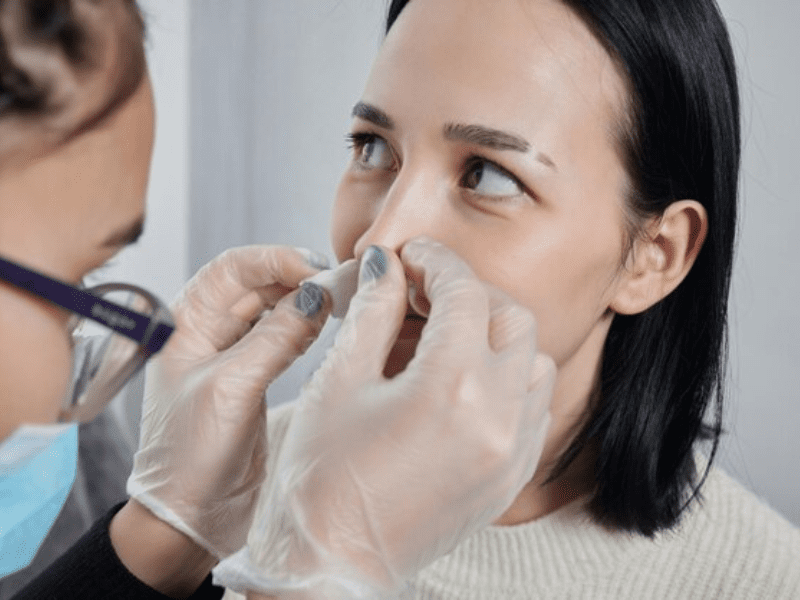
Avoid Nose Blowing:
Following surgery, you may encounter nasal congestion for several weeks, possibly even months, due to swollen nasal tissues. Refrain from the temptation to blow your nose, and consult your doctor about utilizing a saline nasal spray to delicately moisturize your nasal passages until the swelling subsides. It’s advisable to wait until six weeks post-surgery before resuming nose blowing.
Regarding sneezing, it’s not always within your control. Instead, try to sneeze through your mouth rather than your nose. While it might seem unpleasant, opting for this method is preferable to risking harm to your delicate nasal passages and potentially prolonging your nasal tip surgery recovery time.
Avoid Intense Physical Activity:
Typically, it takes about six weeks for the nasal bones to fully heal after surgery. Throughout this period, it’s crucial to steer clear of strenuous exercise. Even seemingly innocuous activities like stretching, lifting, or bending over can contribute to increased nasal swelling. Wait for your doctor’s approval before gradually reintroducing regular physical activity into your routine.
Avoid Wearing Glasses:
Whether they are sunglasses, reading glasses, or prescription glasses, any eyewear that exerts pressure on your healing nose can lead to additional bruising, swelling, or indentations that may necessitate revision rhinoplasty in the future.
Your facial plastic surgeon will guide you on when it’s safe to resume wearing glasses. In the interim, consider using contact lenses if possible. If not, opt for the lightest frames available and wear them only when absolutely necessary.
Avoid Smoking:
It is crucial to refrain from smoking both before and after surgery, and if possible, steer clear of secondhand smoke. Nicotine in tobacco products restricts blood flow, impeding the body’s natural healing processes and adversely affecting your nasal tip surgery recovery time.
Causes of a Bulbous Tip
The rounded or “boxy” appearance of the nasal tip can stem from various factors such as genetics, trauma, or the natural aging process. Below, we’ll delve deeper into the factors contributing to a bulbous tip:
Genetics:
The shape of the nose can be influenced by genetics, with some individuals naturally having a more bulbous tip from birth.
Trauma:
Nose injuries, whether from direct impact or previous rhinoplasty procedures, can alter the tip’s shape, leading to a bulbous appearance.
Aging:
The aging process also plays a role in nose shape, as the reduction of collagen and elastin in the skin over time can result in a softer and more rounded tip.
Cartilage and Bone Structure:
The underlying cartilage and bone structure of the nose contribute to the tip’s shape. Thicker or more defined cartilage or bone can give the tip a bulbous appearance. In certain cases, correction of a bulbous tip may be achievable through rhinoplasty or other cosmetic interventions.
source:Speed Up Your Nasal Tip Surgery Recovery Time
 تست سمیت سلولی
تست سمیت سلولی